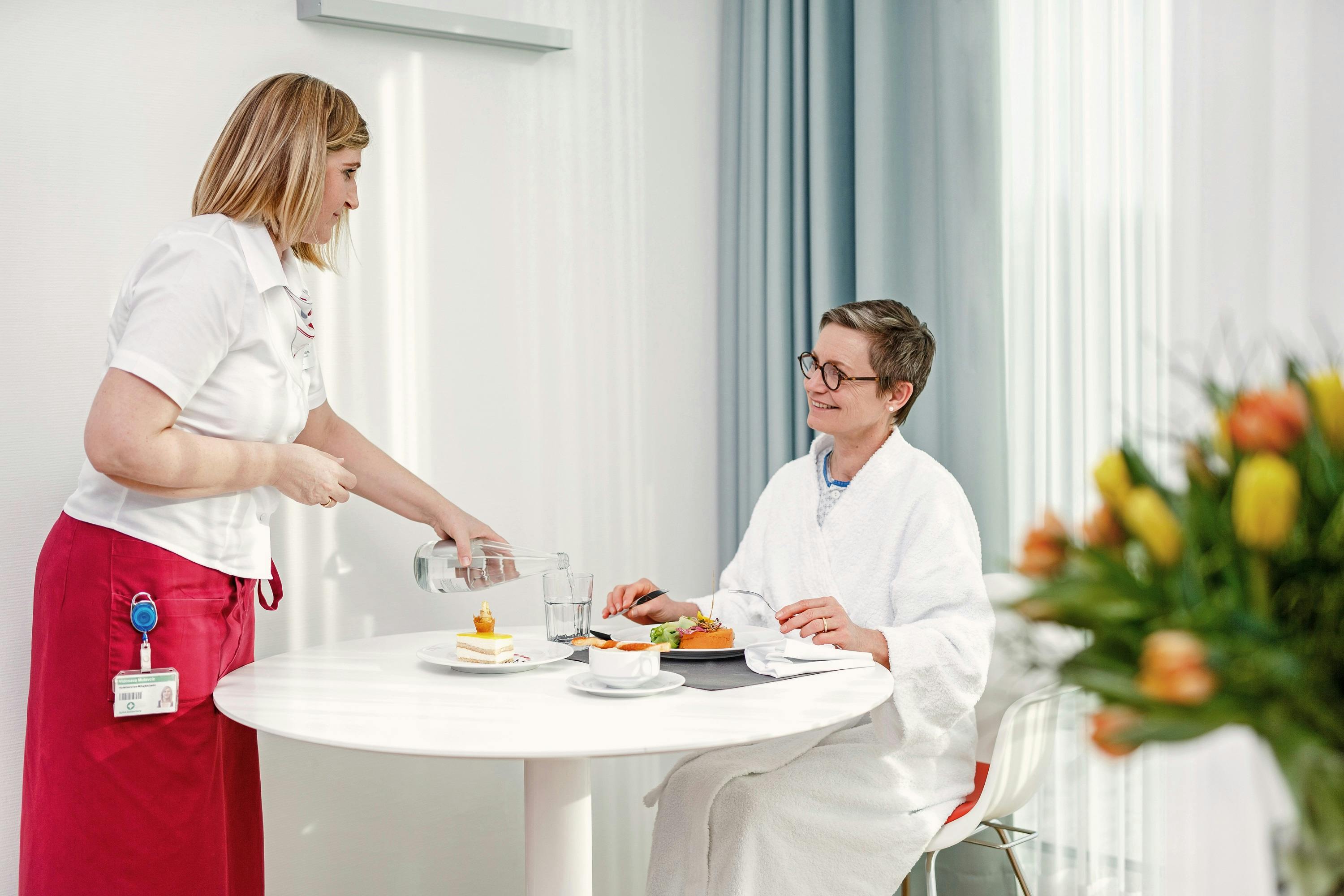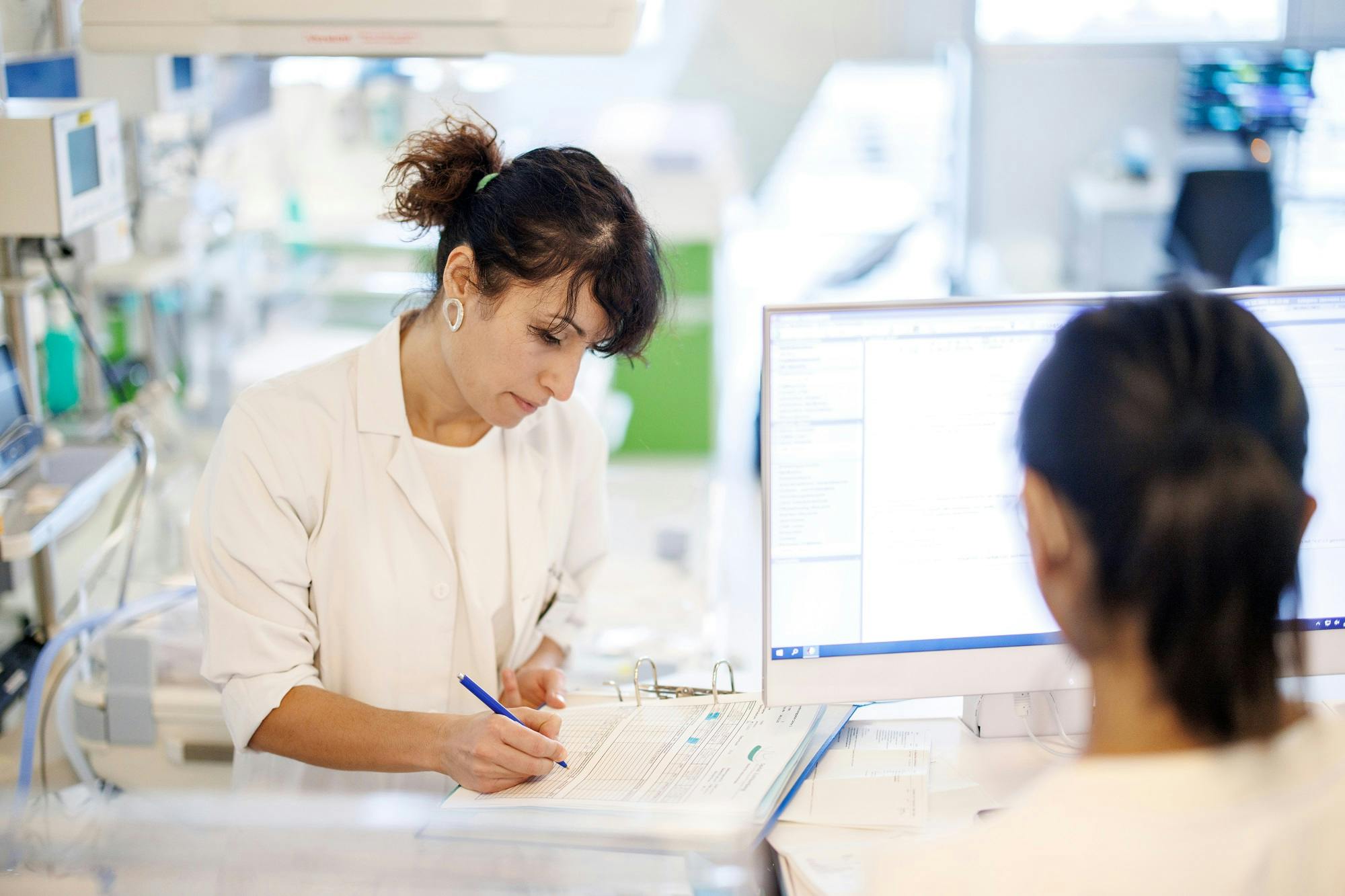Social freezing as a trendsetter: What you should know about egg freezing
Dr. med. Roland Braneti
October 4, 2024
5 min
At a time when professional and private priorities often delay family planning, social freezing is becoming increasingly important. Dr Roland Braneti, Head of our Fertility Centre, answers the most frequently asked questions about egg and sperm freezing in this interview. He explains how modern reproductive technologies help to preserve fertility in the long term.
What exactly is social freezing?
Social freezing is a treatment that can be used to preserve fertility. Women in particular experience an age-related decline in fertility as the egg cells change. In social freezing, eggs are retrieved as early as possible and frozen. This means that their quality can be preserved and they can be used at a later date if it becomes more difficult to fulfil the desire to have children due to age.
Social freezing can also be carried out on men by freezing a sperm sample. However, the age factor plays less of a role here, with more medical aspects coming to the fore.
What is the difference between social freezing and medical freezing?
If a desire to have children cannot be realised at the present time for professional or private reasons and fertility preservation is desired, this is called social freezing. However, there may also be medical reasons for focussing on fertility preservation. Certain treatments (e.g. chemotherapy for malignant diseases, but also ovarian surgery in the case of endometriosis) can impair fertility. If fertility-preserving measures are taken here, this is referred to as medical freezing.
Who is social freezing particularly suitable for?
Women under the age of 35 in particular benefit from social freezing. Men who are exposed to risk factors (e.g. smoking, working with toxic substances) or who have already been diagnosed with severely impaired fertility can also preserve their fertility.
How does social freezing work and how long can eggs or sperm be frozen?
In women, the ovaries are stimulated to develop several eggs by means of drug treatment. These are then retrieved by means of a short procedure and then frozen. In men, a sperm sample is preserved. According to current legislation, egg cells or sperm can be stored for a maximum of ten years in Switzerland.
Our specialist for fertility and gynaecological endocrinology
Dr. med. Roland Braneti
Attending physician
Spital Zollikerberg
Frauenklinik
Trichtenhauserstrasse 20
8125 Zollikerberg
What are the chances of success after social freezing and what factors influence them?
Women should be able to preserve a sufficient quantity of eggs in order to have the best possible chances of pregnancy at a later date. If these eggs are fertilised at a later date, the chances of success depend, among other things, on the sperm quality of the partner. Other factors present at the time of pregnancy (e.g. changes in the uterus, smoking, obesity, etc.) can also influence the outcome.
For men, a sufficient quantity of sperm should be frozen to ensure a good chance of success.
Are the costs of social freezing and medical freezing covered by insurance?
Unfortunately, the costs of social freezing are not covered by health insurance. In the case of medical freezing, there is the possibility of costs being covered in certain situations, which is clarified on a case-by-case basis.
Do you have any advice for people considering social freezing?
Social freezing is no guarantee that the desire to have children can actually be fulfilled at a later date. This depends on other factors, as already described. Nevertheless, social freezing is an important step forward that enables women in particular to better reconcile the desire to have children with private and professional aspects. Women and men alike should consider the issue of fertility preservation and seek appropriate counselling at an early stage.
Non-binding initial consultation
In the best hands
Dr Braneti emphasises that social freezing opens up new opportunities for many people to preserve their fertility. But it remains a personal decision. Comprehensive counselling and consideration of all aspects is crucial. Our team at the Fertility Centre will be happy to assist you with a non-binding, detailed consultation.
Weitere Beiträge
Counsellor
Stress - when body and soul get loud: what you should know
Stress is almost part of everyday life in our fast-paced world. However, if it becomes ingrained and repeatedly throws our everyday life out of balance, it can become a burden for body and mind. We would like to offer you some guidance in this article: What happens when you are stressed, how do you recognise that it is time to pause and how can you find peace and balance again?
Counsellor
Hormone fluctuations in winter: What's really behind them?
Many women experience changes in their physical and mental well-being in winter. They feel tired more often, less resilient or more emotionally sensitive. Cycle changes or more intense premenstrual symptoms are also noticed more often during this time. In addition to external factors such as the cold, less exercise or a change in lifestyle, hormonal processes can also play a role.
Counsellor
Spinal surgery: everything you need to know
At Zollikerberg Hospital, the highest precision applies to one of the most central and at the same time most demanding areas of the body - the spine. Spinal surgery here means not only modern, minimally invasive technology, but above all sound expertise, experience and careful, holistic care. This is what Dr Filippo Mandelli, Head of the Spinal Surgery Clinic, and his team stand for. They treat conditions such as herniated discs, spinal canal stenosis, spondylolisthesis, spinal deformities and degenerative changes competently and sensitively and accompany patients on their way to greater stability and quality of life. In this interview, you can find out what is particularly important in these complex interventions - and what modern spinal medicine can achieve today.


